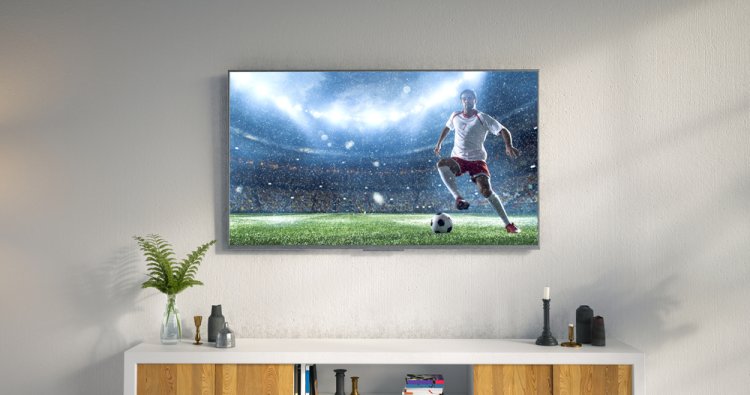6 best solutions for organizing cables behind the TV
There is no need to redo walls and buy expensive elements to hide existing cables. The trick is to make the most of what you already have.

These are the interior design ideas that afflict all new customers who recently purchased a huge TV but have a problem because the cords they require for the TV and the receiver ruin the ambiance.
It's much worse if you want to mount the TV directly to the wall because instead of a clean huge screen, you'll have to deal with a slew of cords protruding from behind the TV.
Fortunately, there are a few simple alternatives that can assist in resolving this issue and concealing those bothersome cords.
1. Installing a new socket
One of the simplest methods is to install a new electrical or cable television outlet directly behind the TV. Although employing an electrician is required, this method is not extremely expensive and addresses all of your difficulties in a few steps.
Installing the outlet directly behind where you will hang the TV on the wall is ideal for entirely concealing the cables, which will then be undetectable. Unfortunately, instead of simply creating a new one and elegantly eliminating the problem, people choose to place the TV in places adjacent to the existing sockets.
Of course, if your cable provider demands a receiver, they're usually tiny enough to put behind the TV, or you can address the problem by using an external Smart TV app that doesn't require a physical cable connection.
2. Channels in the color of the wall
If incorporating an outlet isn't a possibility, using cheap plastic tubes can help you hide any cords in an aesthetic manner. Channels can be installed behind the TV to conceal the wires protruding from the sides, but they can also be installed directly on the wall to conceal the visibility of largely dark cables on a light wall.
Fortunately, ducts are widely available, inexpensive, simple to install, and available in a variety of colors, allowing them to blend in with the color of the walls as much as possible. For those hiding a small group of cables, self-adhesive tape on the back side is sufficient, however, installation to the wall with dowels and screws is required for larger connections.
3. Don't forget laces and Velcro
If you acquire a Wi-Fi router and a separate set-top box/receiver from the operator in addition to the TV, you'll have a lot of cords to deal with. Lace and velcro are two methods for improved organizing. The first step before bundling the cables is to organize and group them so that you can separate them later if necessary.
Following that, the first step is to stack the surplus cables and fasten them with velcro or ties so they don't jiggle too much. Excess cables can be readily kept in this manner and will not interfere with other wires.
If the wall or furniture allows it, you can hide the surplus wires behind the furniture or the console by attaching them via special cable frogs or using self-adhesive tape, all for better organization and a less dusty "forest" of cables. and a complete shambles.
4. Do-it-yourself cable kit
This is one of the more difficult methods, requiring some drilling and work on the walls behind the TV. If there is a storage room, garage, or other space behind the wall where you want to hang the TV, the option is to cut a hole in the wall that leads to another room where you will place all other equipment and excess cables.
The opening should be small enough to allow the appropriate cables to pass through. The good news is that if you make the hole precisely behind the TV, you won't have to worry about cleaning it up too much because the TV will conceal it. Excess cables and other essential gadgets can be stored on a shelf in another room so that they and their cables do not get in your way.
5. Hiding cables through furniture
When shifting furniture, keep in mind that some pieces might be used to conceal cables that protrude from the sides. Consider where you may place the furniture and drill a small hole through which the cables will flow so that they do not bother you and are not visible to your guests.
When combined with channels and ties, this can be a very attractive solution for entirely concealing any unneeded cables without the need for additional outlets or wall drilling.
6. Use a variety of decorations
Home decorations, in addition to furniture, can be useful for concealing cables. For example, if you have a shelf fixed on the wall beneath your TV, you can stack a few books on it to conceal the cables dangling from the wall.
In addition to books, potted plants, candelabra, picture frames, and other items can be utilized to conceal cables; it's just a matter of deciding what works best with your present arrangement and layout.
Post by Bryan C.





























